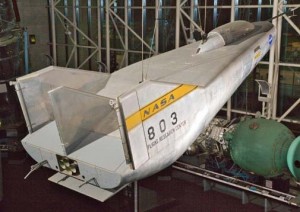America In Space
“The first decade in the Space Age was a unique moment in human history,” says Smithsonian National Air and Space Museum curator Roger Launius. “For the first time, humanity ventured off its home planet, to explore the moon and elsewhere. And along the way, we experienced both excitement and someti…

“The first decade in the Space Age was a unique moment in human history,” says Smithsonian National Air and Space Museum curator Roger Launius. “For the first time, humanity ventured off its home planet, to explore the moon and elsewhere. And along the way, we experienced both excitement and sometimes disappointment. It set the stage for grand technological advances that have changed everyone’s life, as a generation of scientists and engineers applied knowledge gained in space exploration to challenges here on earth.”
Launius narrates the Smithsonian Channel program America In Space, which makes use of footage from a 1968 NASA film covering America’s first ten years of space exploration (cue the eerie space music!). NASA’s film, says Launius, “is more than an account of hardware evolution. It recollects the unshakable optimism of the time, when space seemed to offer unlimited opportunities.”

In between film clips, Launius educates viewers about various items in the Museum’s collections. Lifting Bodies, for instance, which flew to the edges of space in the 1960s and 1970s, came from an idea born in the high desert of California in the early 1960s. “A couple of engineers said, ‘Hey, I think I can build something that doesn’t have any wings.’ " says Launius. “And they sketched out the idea behind the lifting body. They then persuaded the center director out at the Muroc dry lake bed that they could do this. He gave them a little bit of money, not very much, and they constructed a prototype , out of plywood. They went down to Los Angeles and bought an old Pontiac, took it over to a brother-in-law’s house, souped it up so that it would do about 200 miles an hour, and drove it back out to the dry lake bed and towed this plywood lifting body with it. And lo and behold, it flew. And it flew very well. That led to a whole series of craft that were built in the beginning of the mid-1960s, that paved the way for the space shuttle, which was predicated on a lot of the same technology.”
America in Space will be shown on April 5, 16 and 17 on the Smithsonian Channel, and is also available on demand. Check your local television listings for more details.